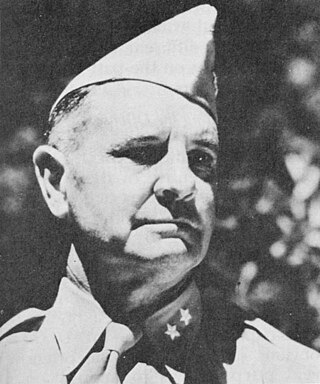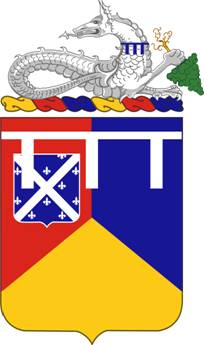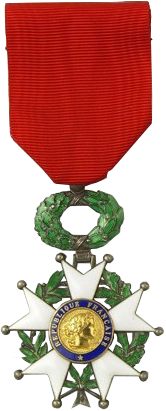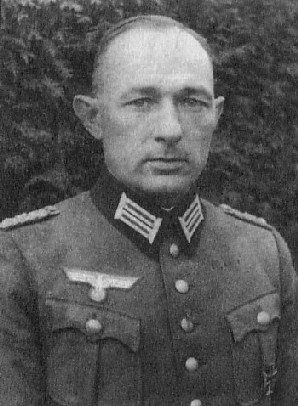The Series
The series consist of 9 books over a 3-year period beginning in 1980. Mahoney, we learn, has often been promoted and busted in his long career. During the period of the Novels, May 1944 to December 1944, Mahoney is a Master Sergeant, that serves in special missions with the Rangers, and as a Company Sergeant, Platoon Leader, and Squad Leader in the "Hammerhead" Division. Mahoney, with his always present side-kick, Corporal Edward Cranepool, become involved in several of the key battles for the liberation of France, and invasion of Germany. Mahoney, as a US Army Ranger aides the French Resistance before, during, and immediately after the June 6, 1944 D-Day invasions of France. Later, tired of always finding himself involved in "suicide" missions, Mahoney and Cranepool transfer to the "Hamerhead" Division in General George S Patton's 3rd Army. With the Hammerheads, Mahoney participates in the battles of the hedgerows after the Normandy invasions, the liberation of Paris, the crossing of the Moselle and battle for Metz, and the defense of Bastogne.
In the first book in the series, Death Train , which takes place in the summer of 1944, Mahoney is a US Army Ranger working behind German lines with the French Resistance, "maquis", to disrupt a rail-road line that will be essential to German troop and supply movement after the D-Day invasion on Omaha Beach. The book establishes Mahoney as a tough, career Army, individual, and an experienced combat veteran that had seen action since the initial US amphibious landings in 1942 at Morocco.
The series ends with Book 9, Hammerhead, circa late December 1944. Mahoney, disgusted by all the death he has seen, and killing he has done, is praying in a small Catholic church. Facing the altar, with his back to the church, he is nearly killed, before two of his arch enemies end up shooting each other. After determining that one of the men has died and the other likely did as well, Mahoney returns to his prayer. We do not learn any more of Mahoney, or Cranepool, after this.
There were several more months of European battle left to fight after December 1944. It is not known why the author, or publisher, discontinued the series.

George Smith Patton Jr. was a general in the United States Army who commanded the Seventh United States Army in the Mediterranean Theater of World War II, and the Third United States Army in France and Germany after the Allied invasion of Normandy in June 1944.

Airborne forces are ground combat units carried by aircraft and airdropped into battle zones, typically by parachute drop. Parachute-qualified infantry and support personnel serving in airborne units are also known as paratroopers.

General Lucian King Truscott Jr. was a highly decorated senior United States Army officer, who saw distinguished active service during World War II. Between 1943–1945, he successively commanded the 3rd Infantry Division, VI Corps, Fifteenth Army and Fifth Army, serving mainly in the Mediterranean Theater of Operations (MTO) during his wartime service. He and Alexander Patch were the only U.S. Army officers to command a division, a corps, and a field army in combat during the war.

Geoffrey Keyes was a highly decorated senior United States Army officer who served with distinction in Sicily and Italy during World War II.

The 2nd Armored Division was an armored division of the United States Army. The division played important roles during World War II in the invasions of Germany, North Africa, and Sicily and in the liberation of France, Belgium, and the Netherlands. During the Cold War, the division was primarily based at Fort Hood, Texas, and had a reinforced brigade forward stationed in Garlstedt, West Germany. After participation in the Persian Gulf War, the division was inactivated in 1995.
The Biscari massacre was a war crime committed by members of the United States Army during World War II. It refers to two incidents in which U.S. soldiers were involved in killing 71 unarmed Italian and 2 German prisoners-of-war at the Regia Aeronautica's 504 air base in Santo Pietro, a small village near Caltagirone, southern Sicily, Italy on 14 July 1943.

The Battle of El Guettar took place during the Tunisia Campaign of World War II, fought between elements of the Army Group Africa under General Hans-Jürgen von Arnim, along with Italian First Army under General Giovanni Messe, and U.S. II Corps under Lieutenant General George Patton in south-central Tunisia. It was the first battle in which U.S. forces were able to defeat the experienced German tank units, but the followup to the battle was inconclusive.

The Story of G.I. Joe, also credited in prints as Ernie Pyle's Story of G.I. Joe, is a 1945 American war film directed by William A. Wellman and starring Burgess Meredith and Robert Mitchum. The film was nominated for four Academy Awards, including Mitchum's only career Oscar nomination.

The 761st Tank Battalion was an independent tank battalion of the United States Army during World War II. Its ranks primarily consisted of African American soldiers, who by War Department policy were not permitted to serve in the same units as White troops; the United States Armed Forces did not officially desegregate until after World War II. The 761st were known as the Black Panthers after their distinctive unit insignia, which featured a black panther's head, and the unit's motto was "Come out fighting". During the war, the unit received a Presidential Unit Citation for its actions. In addition, a large number of individual members also received medals, including one Medal of Honor, eleven Silver Stars and approximately 300 Purple Hearts.

The 1st Ranger Battalion, currently based at Hunter Army Airfield in Savannah, Georgia, United States, is the first of three ranger battalions belonging to the United States Army's 75th Ranger Regiment.

Stalker is a fictional character from the G.I. Joe: A Real American Hero toyline, comic books and animated series. He is the G.I. Joe Team's original ranger and debuted in 1982. He is sometimes called "Sgt. Stalker" on toys. He was the first African-American character in G.I. Joe: A Real American Hero.

The 66th Armor Regiment is the oldest armored unit in the United States Army, tracing its lineage to the 301st Tank Battalion which served with distinction soon after it was formed in the First World War; the 301st trained at Camp Meade, Maryland, where then-Cpt. Dwight D. Eisenhower was an instructor. It has often been rumored that the 301st, the parent unit of the 66th, was first commanded by Col. George S. Patton, but this appears not to have been the case; while Patton was the first officer assigned to the Tank Corps, and while the 301st Tank Battalion was the first unit formed, Patton went nearly immediately to France to train Americans attached to Allied commands. The 301st was the only American heavy tank battalion to have seen action in the war. After the war, the 301st transitioned in the Regular Army to become the 66th Infantry Regiment by way of the 16th Tank Battalion.

Patton's speech to the Third Army was a series of speeches given by General George S. Patton to troops of the United States Third Army in 1944, prior to the Allied invasion of France. The speeches were intended to motivate the inexperienced Third Army for its pending combat duty.
Darby's Rangers is a 1958 American war film starring James Garner as William Orlando Darby, who organizes and leads the first units of United States Army Rangers during World War II. Directed by William Wellman, the picture was shot by Warner Brothers Studios in black and white, to match wartime stock footage included in the production. It was inspired by the 1945 book Darby's Rangers: An Illustrated Portrayal of the Original Rangers, by Major James J. Altieri, himself a veteran of Darby's force.
Jackie Kessler, also known as Jackie Morse Kessler, is an American author of young adult, superhero, paranormal romance, and urban fantasy fiction, including novels, novellas, short stories, and comic books.

The 36th Infantry Division was a German infantry formation of World War II. It was formed in Kaiserslautern on 1 October 1936. During World War II it was mobilized in August 1939, as part of the first wave. It was later reorganized and re-designated the 36th Infantry Division (mot) in November 1940. It was then de-motorized, reorganized and re-designated the 36th Infantry Division on 1 May 1943. The division was destroyed at Bobruysk in June 1944 during the Soviet Operation Bagration. It was reformed on 3 August 1944 as the 36th Grenadier Division and renamed the 36th Volksgrenadier Division in October 1944.
Al Hine (1915–1974) was a reporter, novelist, and movie producer who wrote numerous books including Lord Love a Duck, which was made into a movie starring Tuesday Weld and Roddy McDowall, and pop novels based on the Bewitched TV series and the Beatles' movie Help!.

Jack Neitz Womer was a decorated American World War II veteran and a member of the Filthy Thirteen who was known for his World War II exploits. Womer was a member of the 29th Ranger Battalion, the 101st Airborne Division and the 506th Parachute Infantry Regiment.

Friedrich-Wilhelm Richter (1892–1971) was a German soldier. He was a general in the Wehrmacht during World War II. He is most notable for commanding the 716th Infantry Division during the D-Day Landings in June 1944.
The 198th Infantry Division was an infantry division of the German Heer during World War II.














